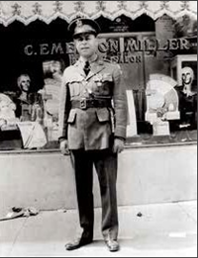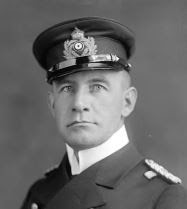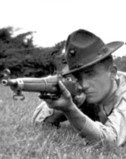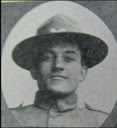May 17 Webinar will discuss key lessons from WWI than can help the world avoid WWIIIPlease join us for this timely online event on May 17 with leading WWI historians and experts exploring how an understanding of WWI might help us avoid slipping into a larger and more devastating world conflict. The panel includes: Sir Hew Strachan; Dr. Jennifer D. Keene; Dr. Libby H. O'Connell; and Attila Szalay-Berzeviczy, Hungarian economist and author of the recently published "In the Centennial Footsteps of the Great War: From Sarajevo to Versailles". The webinar is being held as a fundraiser supporting humanitarian efforts as a result of the war in Ukraine, in cooperation with the Hungarian Embassy in the US. We will solicit donations during the event and pass them to the Hungarian American Cultural Foundation, Inc. at the request of the Hungarian Ambassador to the United States, Mr. Szabolcs Takács. Click here to read more about this upcoming webinar, and learn how to register for this virtual event.  Each year on the 25th of April, Australians and New Zealanders commemorate ANZAC (Australian and New Zealand Army Corps) Day to recognize the sacrifices that Australian and New Zealand servicemen and servicewomen have made not only in defending their country, but in upholding their nations’ longstanding commitment to peace and security. On ANZAC day this year, the Embassies of Australia and New Zealand hosted a dawn service at The National World War I Memorial in Washington, DC to pay reverence to the martyred soldiers. Click here to read more, and see photos of the solemn ceremony held by two of America's World War I allies. A family link to Lusitania tragedy in 1915 On May 20, 2022 in celebration of EMS week, Washington DC Fire & EMS Deputy Chief Michael Knight, Shane Wheeler, Volunteer Medical Services Corp, and Boston researcher George Whitehair will lead the recognition for all EMS workers and in particular, a World War I veteran, doctor, and surgeon, who served in France with the 92nd Division (Buffalo soldiers). He then returned to start an ambulance corps and a hospital, both of which continue to serve their communities almost 100 years later. Click here to read more about Dr. Frank Erdman Boston, who will be honored at the National World War I Memorial along with all EMS workers during National EMS week May 15-21, 2022. |
 Our Washington, DC, April 6, 2022 event, marking the 105th anniversary of the U.S. entry into WWI, was a memorable evening for many. Hosted by Dan Dayton, Chair, Board of Directors, of the Doughboy Foundation, Denise VanBuren, President General of the DAR, and Hungarian Ambassador Szabolcs Takacs, the program presented Attila Szalay-Berzeviczy’s two-volume book, “In the Centennial Footsteps of the Great War” and an exhibit chronicling the historical events and the horrors of the First World War through photos that were taken 100 years later. Click here to read more about the fascinating panel discussion featured at the event, and learn how to watch the video online. |
 To recognize the 2021 centennial commemoration of the Tomb of the Unknown Soldier, Arlington National Cemetery (ANC) created two new major museum exhibits at the cemetery. The first exhibit, located in the Memorial Amphitheater Display Room, directly behind the Tomb, opened in November 2020, while the second, located in the Welcome Center, opened in early 2021. Together, these two exhibits provide new interpretations of the Tomb’s history and legacy to the thousands of global visitors that come to ANC. Click here to learn more about how these exhibits help expand the Tomb’s story and explain its national, as well as international, significance. |
 On July 7, 1919, a group of U.S. military members dedicated Zero Milestone – the point from which all road distances in the country would be measured – just south of the White House lawn in Washington, D.C. The next morning, they helped to define the future of the nation. Instead of an exploratory rocket or deep-sea submarine, these explorers set out in 42 trucks, five passenger cars, and an assortment of motorcycles, ambulances, tank trucks, mobile field kitchens, mobile repair shops, and Signal Corps searchlight trucks. During the first three days of driving, they managed just over five miles per hour. This was most troubling because their goal was to explore the condition of American roads by driving across the U.S. Participating in this exploratory party was U.S. Army Captain Dwight D. Eisenhower. Click here to read more, and learn how Ike, although he played a critical role in much of 20th-century U.S. history, may have carried the most significant impact on the domestic front due to his passion for roads. |
 Three days after Christmas in 1915, a New York City taxi headed to the 5th Street Pier in Hoboken, NJ, where the Dutch ocean liner Rotterdam prepared for an Atlantic crossing. The cab carried a special fare: German diplomat Captain Karl Boy-Ed (left), a career military man and the German embassy’s naval attaché, one of the highest-ranking consular posts. After nearly four years stationed in America, Boy-Ed was sailing home in disgrace, ejected from the United States by the American government, accused of engaging in sabotage and deceptive propaganda in brazen violation of America’s policy of neutrality in World War I. But all was not as it seemed that day. Click here to read more, and learn how the distinctly 21st Century concept of "fake news" has, like so many other things in the world do, its own ugly antecedents in WWI. |
 World War I saw the introduction of many innovations in military technology, including the development of tanks, submarines, warplanes, and guns. Some of these technologies remain in use a century later. Brady Kirkpatrick, Editor-in-Chief of gunmade.com, makes a list of guns used by various armed forces in World War I that are still used in the military and among law enforcement professionals and civilians. The first World War ended over a century ago, which means the guns on this list are among the most reliable firearms ever built. Click here to learn more, and explore the six examples of historic WWI guns still very much in use today. |
 A man is only missing if he is forgotten. Our Doughboy MIA this month is Private Giovanni Aliberti. Giovanni Aliberti was an immigrant to the US. Born in Scipiono, Italy on 27 January 1896. He arrived in America through the port of New York at age 16 on 24 May 1912 with just $25.00 in his pocket. A farm laborer, he was among the few of his station who could both read and write well. He first settled in Little Kansas, Pennsylvania before moving to Donora in Washington County, PA where he was living when war came to his new country. He signed his draft card in June 1917 giving his description as black hair, brown eyes, of medium build and claimed no exemptions. Eager to do his bit for his adopted land, Giovanni enlisted in the army at Fort Howard, Maryland on 2 November 1917. His association with Pennsylvania almost assured him assignment to a Pennsylvania regiment at that time, and he was not disappointed; Giovanni was assigned to Company A/110th Infantry Regiment/28th Division. With them he sailed for France aboard the City of Calcutta on 3 May 1918. He served that summer honorably through all of the 110th’s engagements. In August they found themselves heavily engaged on the Vesle enduring the vicious street fighting in the town of Fismes. (The work of the 28th Division is ably described in the books ‘Toward the Flame’ by Hervey Allen, and ‘I Remember the Last War’ by Bob Hoffman.) Suffering heavy casualties as the battle rolled on, internal temporary inter-regimental transfers occurred, and Giovanni was sent to Company L of the 3rd Battalion on 6 August. In early September the 28th crossed the Vesle and began moving forward. The drive of the 110th took them on a path toward the town of Merval with the 3rd Battalion out front and it was during this drive that Giovanni Aliberti was killed. His sergeant witnessed him shot in right side of the head by a German sniper, killing him instantly. Later that day he was buried in a trench alcove. His grave was clearly marked with a cross, his helmet and one of his dog tags, and a later map illustrated the approximate spot. Despite this, when Graves Registration Service searchers went out to find him in 1921, they were unable to locate the burial location. Today Giovanni Aliberti is memorialized on the Tablets of the Missing at the American Oise-Aisne Cemetery. Giovanni Aliberti is also on the search list of Doughboy MIA. We believe we have a shot at finding his remains – but we need YOUR help. Won’t you make an effort to help make as full an accounting of our missing Doughboys as possible? Please consider making a tax-deductible donation to our non-profit organization and do YOUR part to help us! Please visit www.ww1cc.org/mia of |
|














